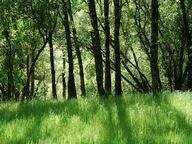Quiz Answer Key and Fun Facts
1. What is the oldest national forest in the United States?
2. In the United States about 31% of the forest in the United States is considered to be privately owned.
3. Another name for forest land is timberlands.
4. What is the following describing? Fire to bare soil to herbs or grasses to alder or salmonberry to douglas fir to shade tolerant species?
5. Which forest in the United States is growing on what used to be glacial moraines?
6. What type of forest covers the eastern United States, from the Atlantic Coast to the Mississippi River and beyond?
7. Which of the following is not a type of cutting procedure in the shelterwood system?
8. Which of the following is the largest forest in the United States? It is located in Alaska.
9. Whose expedition is credited with opening up the Pacific Northwest for logging operations?
10. Are people allowed to cut down a Christmas tree in any national forest in the United States?
Source: Author
ponycargirl
This quiz was reviewed by FunTrivia editor
rossian before going online.
Any errors found in FunTrivia content are routinely corrected through our feedback system.
